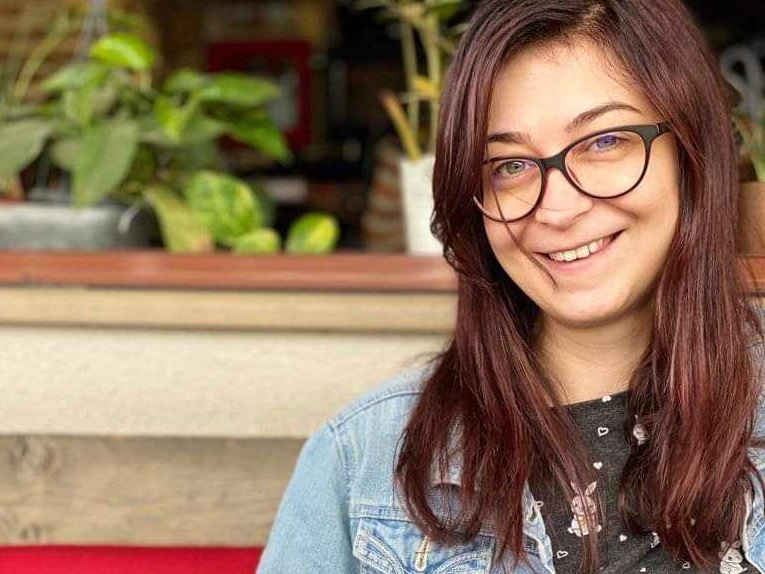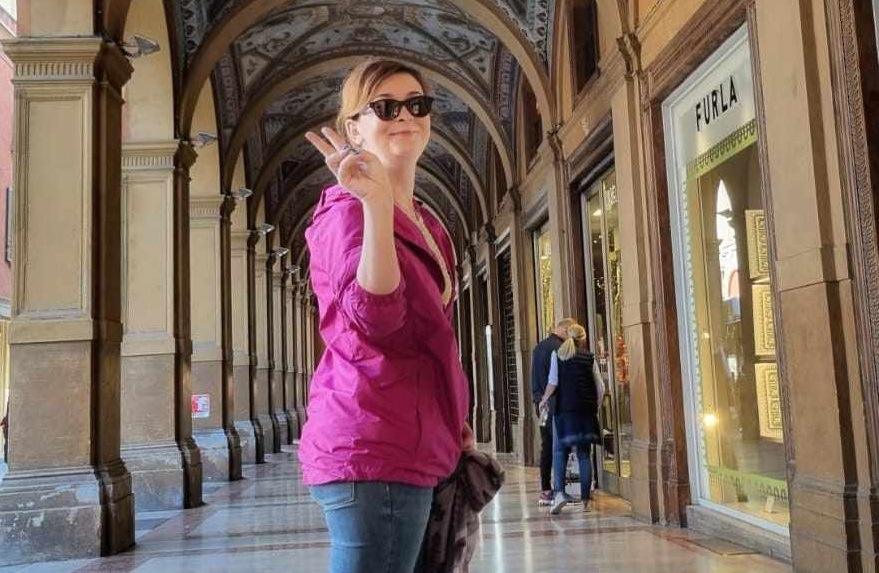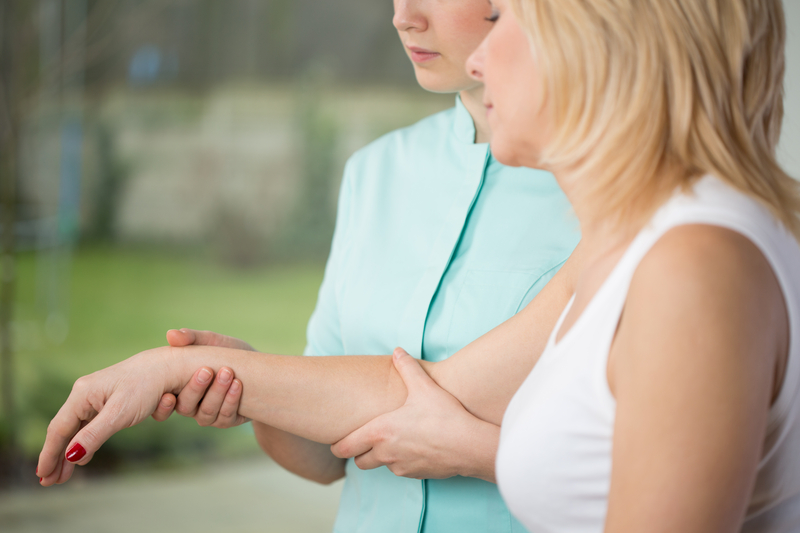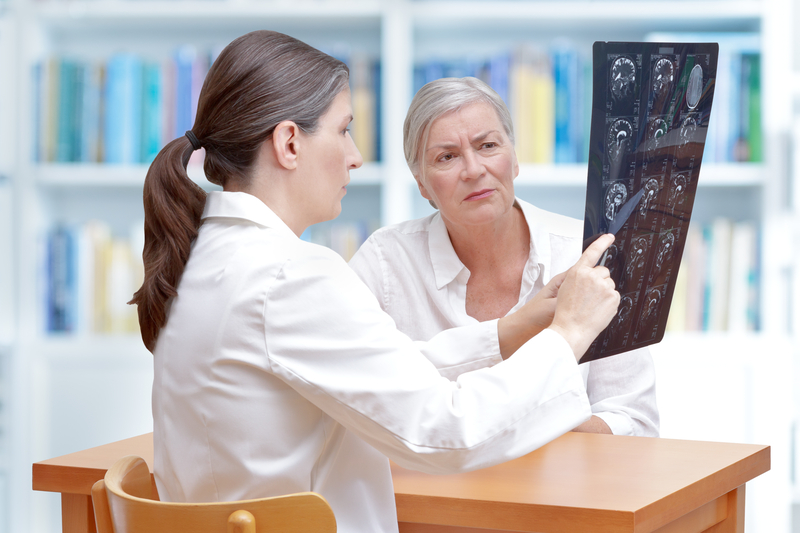
Anka is 35 years old, and a year ago she was “reborn” after a hemorrhagic stroke. Today, Anka considers herself lucky as she has successfully overcome the biggest challenge of her life. He wanted to tell his story at an event organized by the Cerebrovascular Disorders Association (ALIA), where he is a volunteer, precisely because he wants the world to understand that young people can also go through this – “I am living proof”. as she says – and stroke is no longer just a disease of the elderly.
“My head hurt so bad, I could no longer keep my eyes open and I was no longer coherent”
One day in the summer of 2022, when she was only 34 years old, Anka began to have a severe headache. Even though she had migraines in the past, she had never experienced such pain before. In the past, he had CT scans and magnetic resonance imaging done to eliminate headaches, but they would come and go.
At the end of that summer day in 2022, Anka felt that she could no longer keep her eyes open and could practically do nothing. She was alone at home and called 112: “I had an incredibly bad headache, I could not keep my eyes open and was no longer connected.”
The cause of Anka’s unbearable headache was a hemorrhagic stroke. She finds out about this only a few days later, when she wakes up in the neurological department of the university hospital after an operation, and does not know what is happening to her, only remembers fragments. Then it was explained to him. “Young people can also suffer from this diagnosis,” says Anka today.

Anka / Photo: Personal archive
She says that one of the things that affected her the most during that time was that she was forgetting a lot of things, “I was forgetting hand to mouth,” and communication is also important in a stroke patient’s recovery.
Anka was hospitalized for 21 days after her stroke, during which the hospitals became her home: “Last summer, the hospitals in Bucharest were my home. I was in the hospital for 21 days. It is not easy to stay in the hospital for so long, far from loved ones.”
“I’ve never been sick before, I’ve never been in a hospital.”
“After all this experience, I want to talk more about stroke, about the signs of this disease, about how to recognize them and what to do, about what young people can experience because of it. Stroke has ceased to be a disease of only the elderly. It is important to engage in prevention. I, for one, want to continue this,” Anka says now.
Before the stroke, Anka worked as a music promoter, event organizer, communications and social media specialist. After the stroke, she learned to continue doing what she loves, but to take better care of herself and listen to her body.
She considers herself lucky to have recovered and remained free of the effects. After the experience he went through, he chose to volunteer with the Association for the Prevention of Cerebral Vascular Accidents (ALIA).

Anka / Photo: Personal archive
Doctor: “The number of stroke patients no longer depends on age”
The number of stroke patients no longer depends on age – we are increasingly talking about young patients who often remain with the consequences – those who survive – and about long periods of recovery, says Prof. Dr. Gheorghe Jana, primary care physician, radiology and imaging physician, with super-specialization in neuroimaging, and president of the Romanian Society of Neuroradiology and Interventional Radiology.
Gheorghe Yana is one of the few doctors in Romania who treat ischemic stroke using endovascular thrombectomy, a minimally invasive interventional radiological technique that radically reduces the incidence of serious post-stroke complications.

Dr. Gheorghe Yana / Photo: Agerpres
“In practice, stroke is the main cause of disability in Romania, and the number of stroke patients is no longer related to age. We are talking about young people, long periods of recovery. These things have led us to a multidisciplinary approach to stroke. Combining several specialties in solving the case is important,” says Dr. Gheorghe Yana.
Recognizing the signs of a stroke can save lives
More than 60,000 Romanians suffer a stroke every year, and cerebrovascular disease is one of the leading causes of death and disability in Romania, according to the Ministry of Health.
Every 6 seconds, a person in the world dies from a stroke, and on average 1 in 6 people will suffer a stroke in their lifetime.
A stroke is an extremely serious condition. Many stroke patients die within the first 30 days after the accident, and those who survive can have serious neurological consequences (paralysis of limbs, speech disorders, balance disorders, vision disorders, etc.).
A stroke occurs when part of the brain stops working because of problems with the arteries that supply the brain with blood and nutrients. In other words, an artery that feeds the brain can become blocked by a blood clot (ischemic stroke) or rupture, causing blood to pool inside the brain (hemorrhagic stroke). In both situations, brain cells begin to die within minutes.

Recovery after a stroke / Photo: Katarzyna Bialasiewicz | Dreamstime.com
Prompt recognition by the patient or their relatives of the signs of a stroke is important to save the patient’s life or limit the consequences. Stroke symptoms appear suddenly and may temporarily improve or worsen. Not everyone who has had a stroke has the same symptoms.
Each of us needs to understand that if we recognize the signs of a stroke, we can save a life, says the president of the Stroke Association (ALIA), Liliana Curea: “It could be the life of a parent, a grandparent, a friend, a colleague at work. That’s the message I wanted to convey on World Stroke Day.”
Liliana Kuria also says that she is convinced that “together from now on we will be able to learn more about everything that means stroke prevention and recognition, and we will fight for the authorities to provide everything necessary for the treatment and recovery of stroke patients.”

Anka with Liliana Courea, president of the Association for Cerebrovascular Disorders (ALIA) / Photo: ALIA
The most common signs of a stroke:
- Asymmetry of the face – the lower half of the face sags, or the corners of the mouth are directed in the opposite direction.
- Slurred speech – speech is slurred or words are pronounced indistinctly or with difficulty.
- Arm drop – sudden loss of strength in an arm or leg, or difficulty coordinating arm or leg movements.
How to recognize a stroke:
- Difficulty speaking and understanding what others are saying;
- Sudden paralysis or numbness of the face, arms, or legs;
- Impaired vision in one or both eyes or diplopia occurring suddenly;
- Sudden severe headache, which may be accompanied by vomiting, dizziness and loss of consciousness;
- Sudden difficulty walking, loss of balance, or loss of coordination.
- Symptoms of a stroke depend on the affected area of the brain. Most often, a certain part of the brain is affected, the destruction of which leads to paralysis of an arm and/or leg and impaired speech.

Stroke / Photo: Agenturfotografin| Dreamstime.com
At the international level, the FAST scale (test) is used to quickly recognize stroke symptoms:
- F (Face – Face) – ask the patient to smile. Does he have an asymmetrical face or is the corner of his mouth turned to one side?
- A (Arms) – ask the patient to raise both arms at the same time. Does one arm stay lower than the other or can’t raise it at all?
- S (Speech) – ask the patient to say a sentence. For example: “It’s sunny outside.” Does he speak strangely or do you not understand what he is saying?
- T (Time) – speed dial 112.
- If the answer to any of the above questions is “YES” – you must urgently call 112!
Photo: Dreamstime.com, Agerpres, Anka’s personal archive.
Read also:
-
“When I called 911, they told me I was drunk.” The shocking story of Oana, a young woman who survived a condition that kills a man every 6 seconds
- The procedure is performed in only 9 hospitals in Romania and by only 32 doctors. What is thrombectomy and who needs it?
Source: Hot News
Ashley Bailey is a talented author and journalist known for her writing on trending topics. Currently working at 247 news reel, she brings readers fresh perspectives on current issues. With her well-researched and thought-provoking articles, she captures the zeitgeist and stays ahead of the latest trends. Ashley’s writing is a must-read for anyone interested in staying up-to-date with the latest developments.